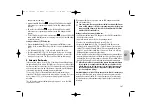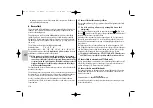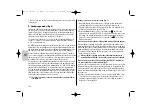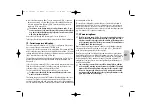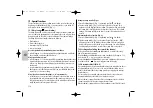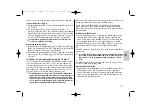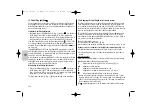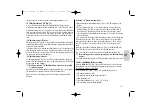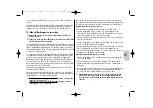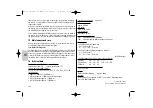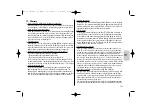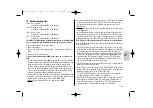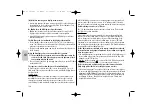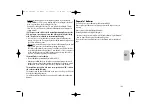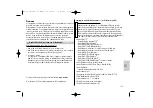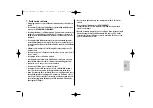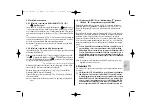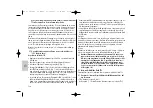
121
ķ
To insert the wide-angle diffuser
(Fig. 2) turn it 90° down, and push in
entirely.
Modes that operate with measuring pre-flash or high-speed synchronisation
(HSS) must not be set when working with wide-angle diffuser or reflector
attachments such as colour filters, neutral density filter, Mecabounce, etc.
14. Manual flash exposure correction
Manual flash exposure correction is only possible if an SCA 3xx2
adapter is used.
In the auto mode A, manual flash exposure correction is possible with
an SCA 3xx and SCA 3xx2 adapter.
The automatic exposure system of the mecablitz and most cameras is based
on a subject reflection factor of 25 % (average reflection of subjects shot with
flash). A dark background that absorbs a great deal of light, or a highly re-
flective bright background (e.g. when shooting against the light), can result in
overexposure or underexposure.
To compensate for the aforementioned effect, the exposure can be manually
corrected with a correction value adapted to the given photographic situa-
tion. This correction value depends on the contrast between subject and
background! In the TTL and A mode of the mecablitz, manual flash exposure
correction factors of -3 EV to +3 EV (f-stops) can be set in one-third incre-
ments. Many cameras have a setting element for exposure corrections which
can also be used in the TTL flash mode.
Please refer to the explanations in the operating instructions for the given
camera and the SCA adapter.
Exposure correction by changing the aperture on the lens is not possible in
this instance because the camera’s automatic exposure system will regard the
changed aperture as the normal working aperture.
Dark subject in front of a bright background: Positive correction value
(approx. 1 to 2 f-stops EV)
Bright subject in front of a dark background: Negative correction
value (approx. -1 to -2 f-stops EV)
☞
☞
☞
The entering of a correction value may result in a change of the maximum
flash range indicated on the LC display of the mecablitz and its adaptation to
the correction value (depending upon the camera type and SCA adapter)!
Setting manual flash exposure correction:
• The mecablitz is operating in TTL flash mode or in A flash mode.
• Turn the setting disk
(Fig. 1) until the „EV“ symbol appears on the
LC display. The arrow symbol alongside „EV“ indicates that a position has
been reached where you can enter a correction value.
• Press the setting disk in the direction of the arrow. The arrow symbol along-
side „EV“ starts to flash.
• Turn the setting disk to set a suitable correction value. The correction value
is shown on the LC display of the mecablitz.
• Press the setting disk in the direction of the arrow for storage. The selected
value is automatically stored after 5 seconds if the setting disk is not
pressed. The arrow symbol alongside „EV“ ceases to flash. The set value is
displayed on the LC display of the mecablitz.
Deactivating manual flash exposure correction:
• Turn the setting disk
(Fig. 1) until the arrow symbol appears alongside
„EV“ on the LC display.
• Press the setting disk. The arrow symbol alongside „EV“ starts to flash.
• Turn the setting disk until the displayed correction value is extinguished on
the display.
• Press the setting disk in the direction of the arrow to confirm deactivation. If
the setting disk is not pressed the function is automatically deleted after
5 seconds. The arrow symbol alongside „EV“ ceases to flash.
Manual flash exposure correction is only possible if the camera sup-
ports this function! If the camera does not support this function, the
correction value can be adjusted on the mecablitz, but cannot become
effective!
☞
704 47 0099.A3 54 MZ-4i 01.02.2007 13:41 Uhr Seite 121

